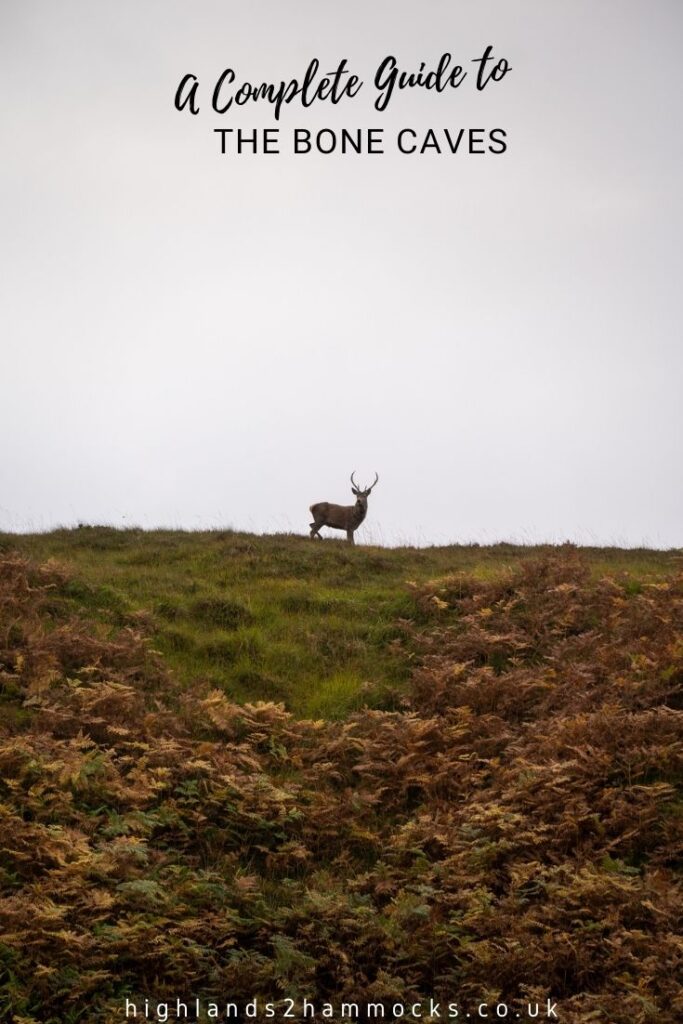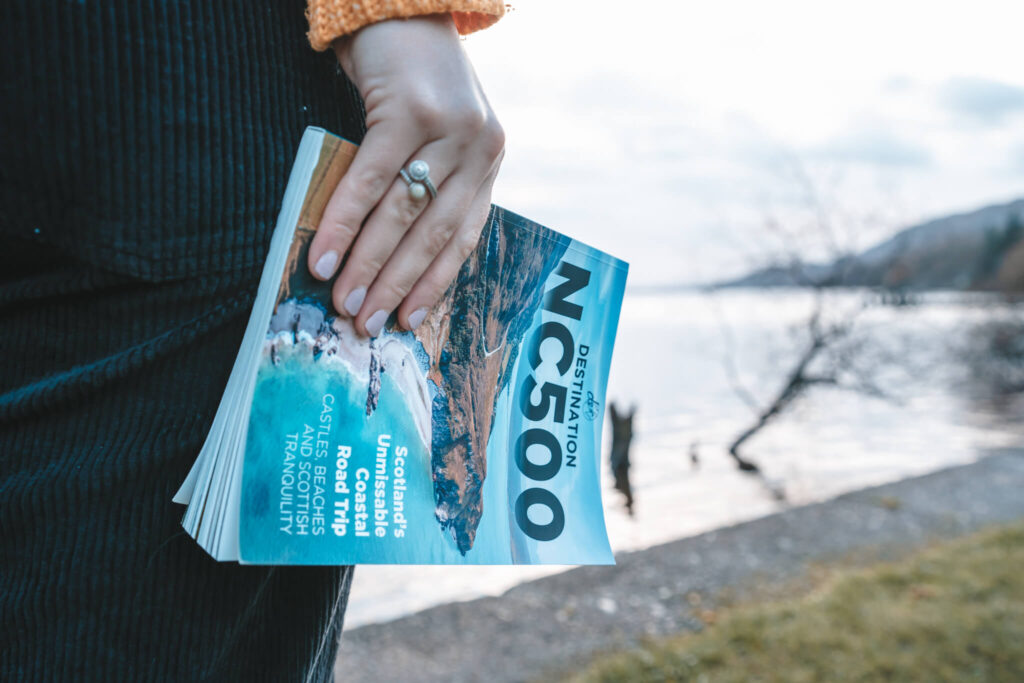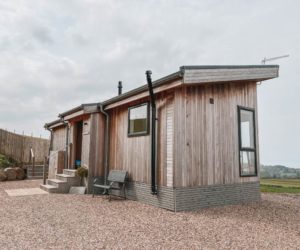Hidden deep in a forgotten glen in the Wester Ross region of Scotland is a that was once filled with the bones of ancient predators. This hidden series of caves that sit high up on the cliffs of Allt nan Uamh once contained the skulls and skeletal remains of polar bears, wolves, and lynxes, all of whom once roamed the wilderness of the highlands of Scotland.
After parking up in the large, free-to-use car park, the path to this fascinating place winds its way through the towering mountains along the banks of the Allt nan Uamh river. In just under an hour, you will be transported from the busy A837 road to the gaping mouth of these ancient sandstone caves, experiencing the history of the land for yourself.
The walk to the caves is reasonably flat, consisting of a dirt and stone path that winds its way along the banks of the river. The final 500m of the walk takes you up the steep slopes of the side of the glen to reach the caves, however, even this is fairly easygoing as it consists of manmade steps. It is a total of 2km from the car park to the caves and will take roughly an hour if enjoyed at a leisurely pace.
Located in the north west highlands on the main route of the famous North Coast 500 road trip, this is a popular site to visit for those enjoying this road. Although it takes a little more time than some of the other attractions on the route, the journey to the caves is definitely worth it as we would rate it as one of the most unique sights in northern Scotland.
No time to read now? No problem, save a pin to your Pinterest board for later!
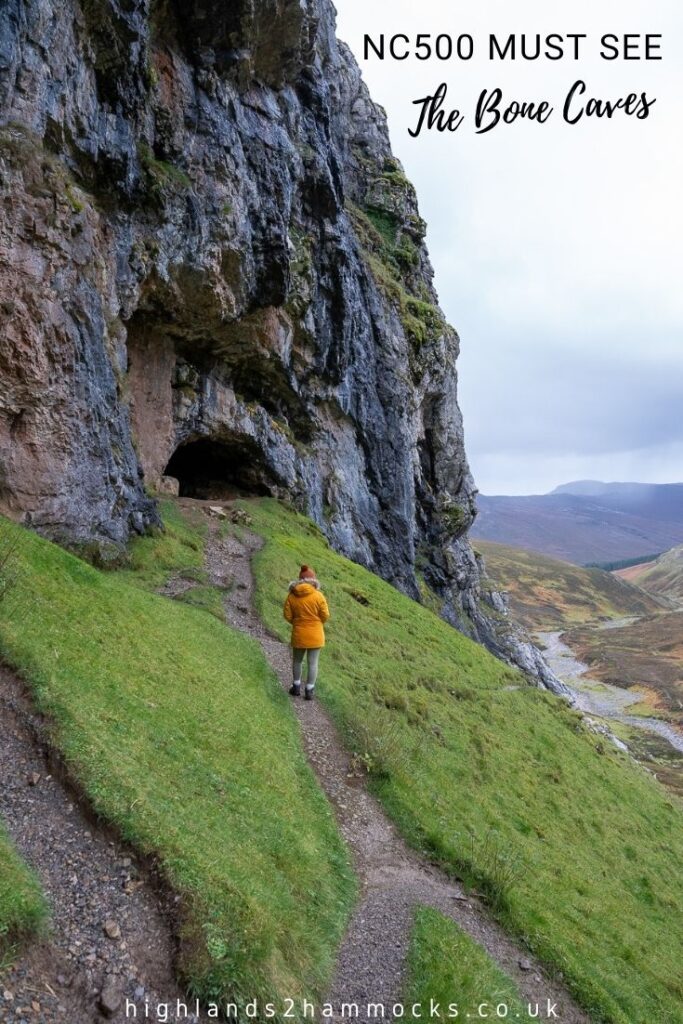
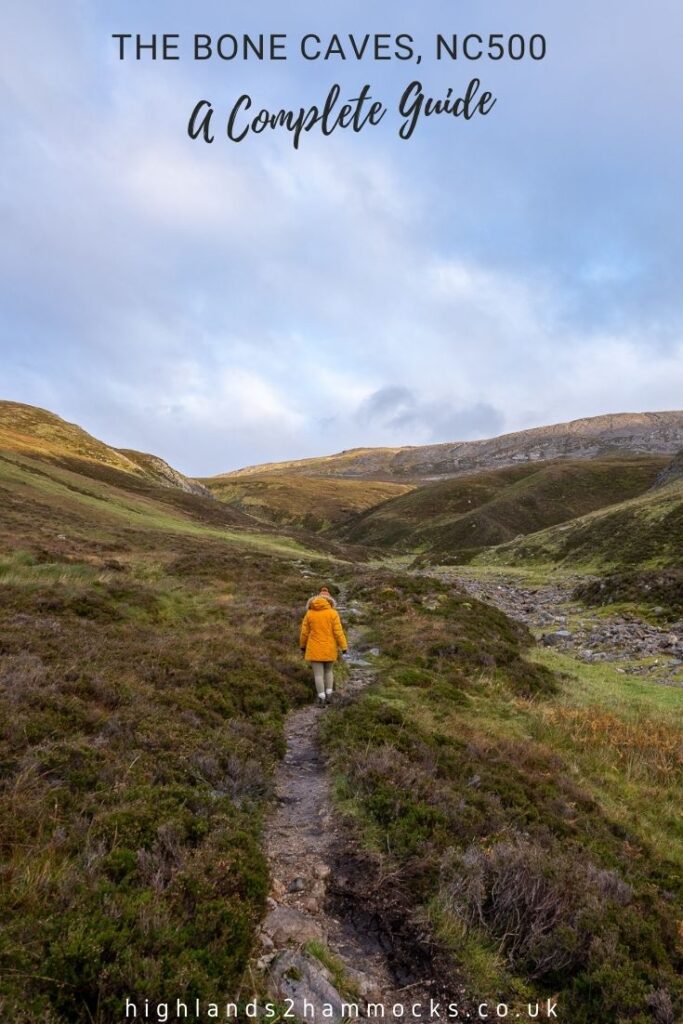
Complete Guide to The Bone Caves (Allt nan Uamh)
The hike along the banks of the Allt nan Uamh (Burn of the Caves) is an unmissable attraction on the North Coast 500 road trip. In less than 30 minutes, you are transported from the busy main road of the route to a part of Scotland that is unbeknownst to a lot of locals.
In this guide to the Bone Caves, we will tell you how you can find the caves, as well as how to prepare for your trip. Listed below is a brief list of the contents of this complete guide to the Allt nan Uamh.
Table of Contents
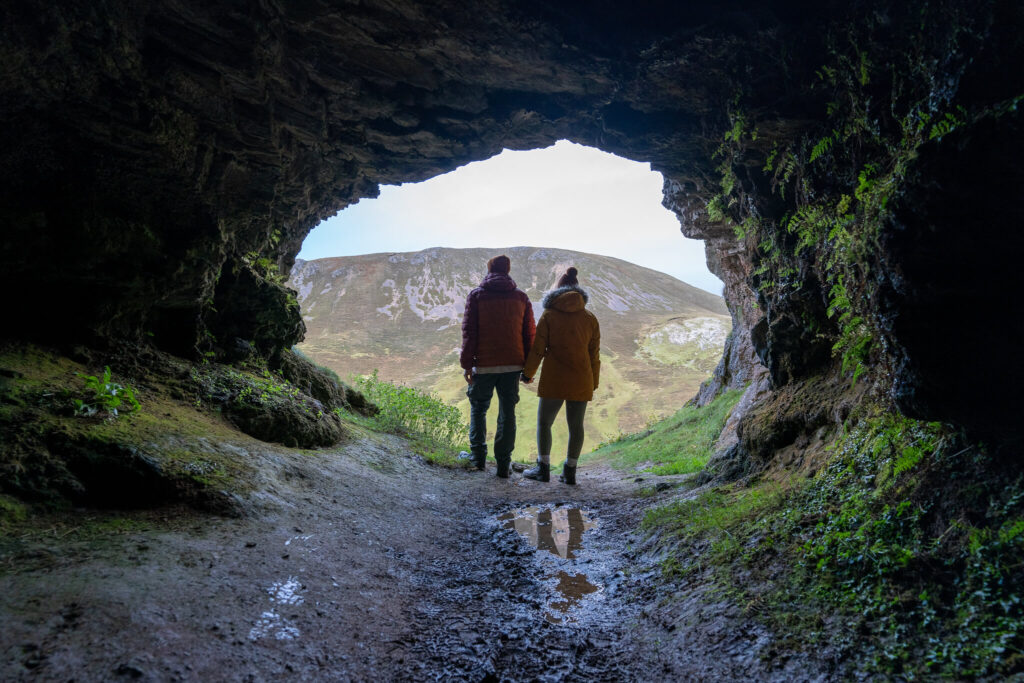
Planning Your Trip
We use the below booking platforms to plan our trips. We hope you find them useful too!
What are the Bone Caves?
The dramatic and mountainous area of Wester Ross known as the Moine Thrust is full of hidden gems dotted amongst the towering peaks and deep glens. One of the most fascinating of these can be found just outside of the hamlet of Inchnadamph, which was the location of one of Scotland’s most bizarre discoveries.
In 1995, a group of cavers made a very unexpected discovery deep in the limestone caverns that line the southern side of the Allt nan Uamh glen. When exploring the lower caves, this group uncovered a number of animal and human bones, including the remains of reindeer, arctic fox, eurasian lynx, brown bear, and Scotland’s only skeletal remains of a polar bear.
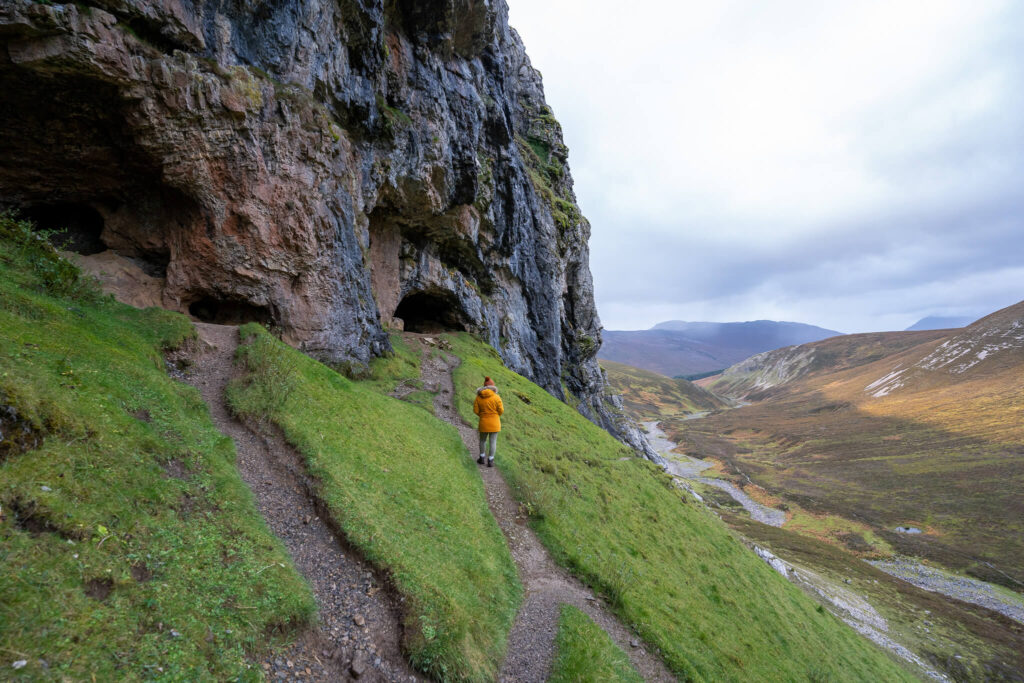
Where are the Bone Caves?
The car park for the Bone Caves sits at the side of the A837, about 2.5 miles south of Loch Assynt. Following the Allt nan Uamh river into the glen, the caves sit high up on the hillside, dug deep into the side of the limestone cliffs on the southern side.
The path leading out to the caves is fairly obvious and easy going, snaking alongside the banks of the river along a rough, gravel track. The path eventually cross the river and begins to wind up the side of the hill, following a series of manmade steps up to the mouths of the caves.
Coordinates of the Bone Caves – 58°06’29.9″N 4°56’26.2″W
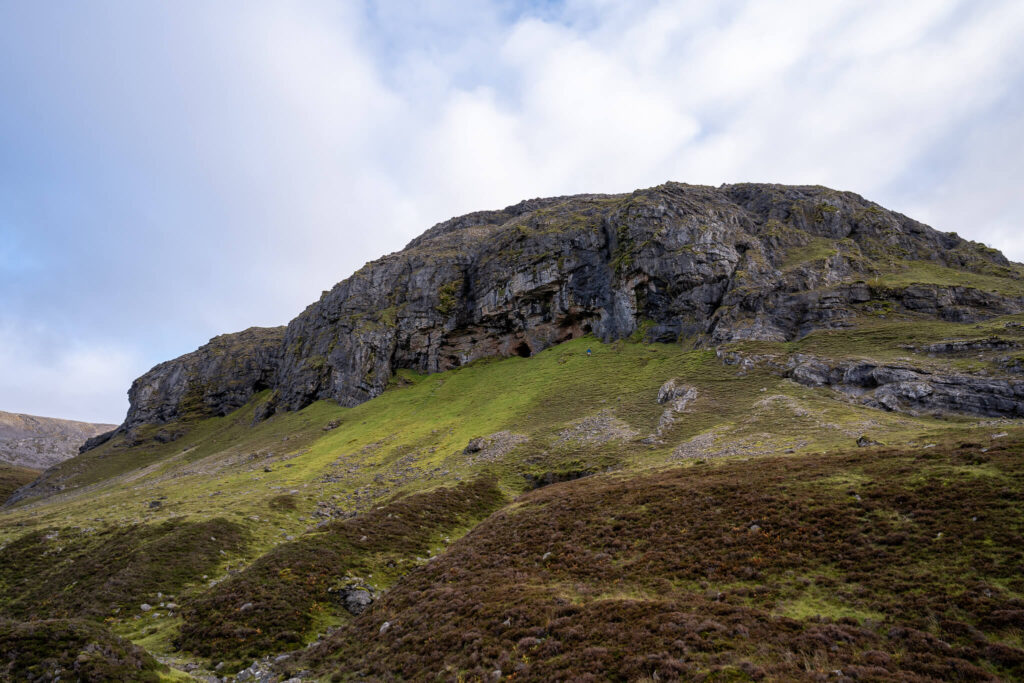
How to get to Allt nan Uamh (and where to park)
There is free parking available at the beginning of the walk to the Bone Caves, located at the side of the A837 to the south of Loch Assynt. The car park is large enough for about 10 cars, and there is also additional parking outside of the nearby house for a small fee.
From the car park, the path joins up with the Allt nan Uamh river and winds along beside it deep into the glen. Pass by the beautiful Allt nan Uamh waterfall and continue along the path, taking care with the conditions underfoot if it has been raining.
As you continue along this path, the caves will eventually come into view in the distance. Look out for a large bolder that marks a fork in the path, with one contiuning left through the glen and on towards Ben More, and one branching off to the right across the river.
Take the right path and follow the track up the steps that ascend the hill to the mouth of the caves.

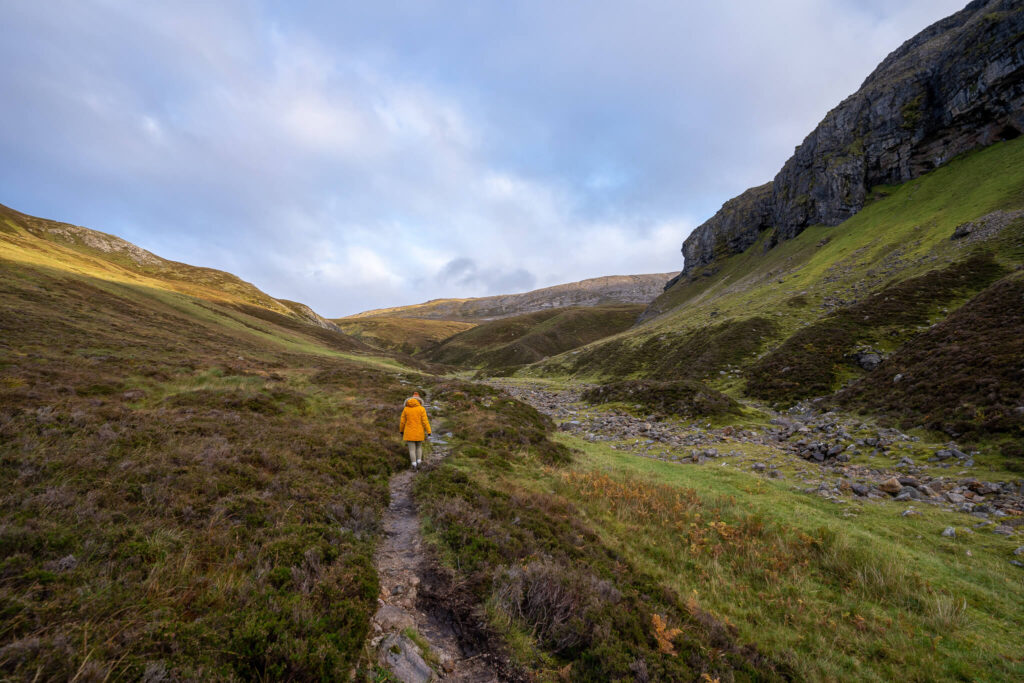
DON’T FORGET
Your trip to Scotland will be a lot more comfortable with a midge net and midge spray. These little biting bugs can be enough to ruin a trip if you don’t have the equipment to protect yourself from them. A repelling candle can also be helpful if you are sitting oustide.
What to Expect at the Bone Caves?
Once you have reached the top of the hill, you will find the series of limestone caves that are now known as the Bone Caves. There are a few smaller caves and three main larger ones that are quite easily accessible if you are confident on rough and uneven floors.
Each of the larger caves are about 5 metres in depth and are tall enough to stand up in, with very little light reaching the back wall of the cave. We recommend bring a torch if you wish to explore the back end of the caves, as it is quite easy to injure yourself in the dark.
Extreme care must be taken when exploring these ancient and unstable parts of Scotland. The steep drop from the cave mouth and the cliffs above the cave itself give rise to a serious risk of injury by falling debris. Limit the time that you spend around the edge of the cliffside for this reason.
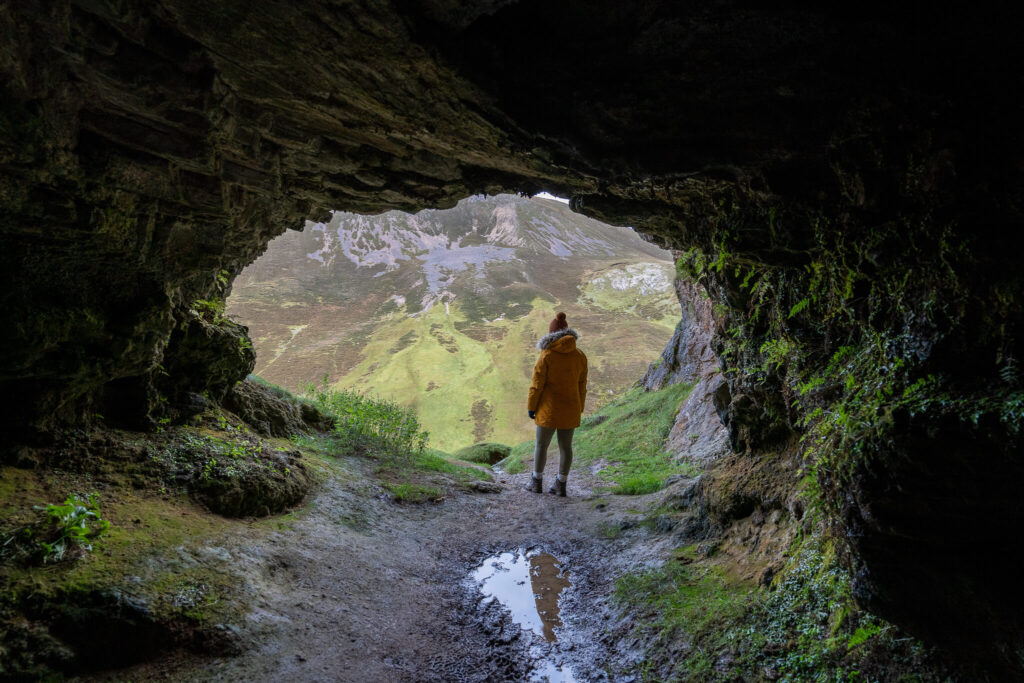
When is the Best Time to Visit?
There is no real “best time” to visit the caves as they are open to the elements all day long. If you wish to explore at the quieter time of the day, then we suggest heading out to the caves early in the day, preferably for sunrise. This will allow you to enjoy the beautiful light of golden hour as it slowly illuminates the glen and the mountains beyond.
No matter when you visit the caves, keep an eye on the hills for the frequently sighted red deer that call this wilderness home. When we visited in October, rutting season was well underway and the glen was filled with the echoing calls of the stags.

Struggling to plan your North Coast 500 road trip?!
Before You Leave on the North Coast 500
Before you head off on your trip around the NC500, there are certain things you will need to get organised to ensure a smooth trip. These include how to get around the route, including being aware of single track roads, etc., what to pack for Scotland, where to stay along the route and what travel insurance to book.
Read more planning tips for the North Coast 500 in our full guide.
How Do I Get Around the NC500
Given the remote location of the NC500 and the majority of the sights along the route, the best way to get around this road trip is by driving. There are of course other methods that are still popular, such as cycling and hiking, however, if you have a short amount of time on the route, neither of these are very suitable.
As for public transport, the use around the NC500 is understandably difficult due to how remote each location is, however, with the increasing problem of congestion along the route, this is a good option to research if you have time. If it is something that interests you, you can read an itinerary of how to get around the NC500 by public transport over here.
If you are looking to rent a cosy, reliable, and luxurious campervan for your trip along the NC500, we highly recommend hiring through Spaceships Rentals. We toured around the up-and-coming Heart 200 road trip in Scotland’s central highlands in a campervan and its by far the best way to get around and see the amazing scenery.
Browse the full range of vehicles on offer at Spaceships Rentals over here.
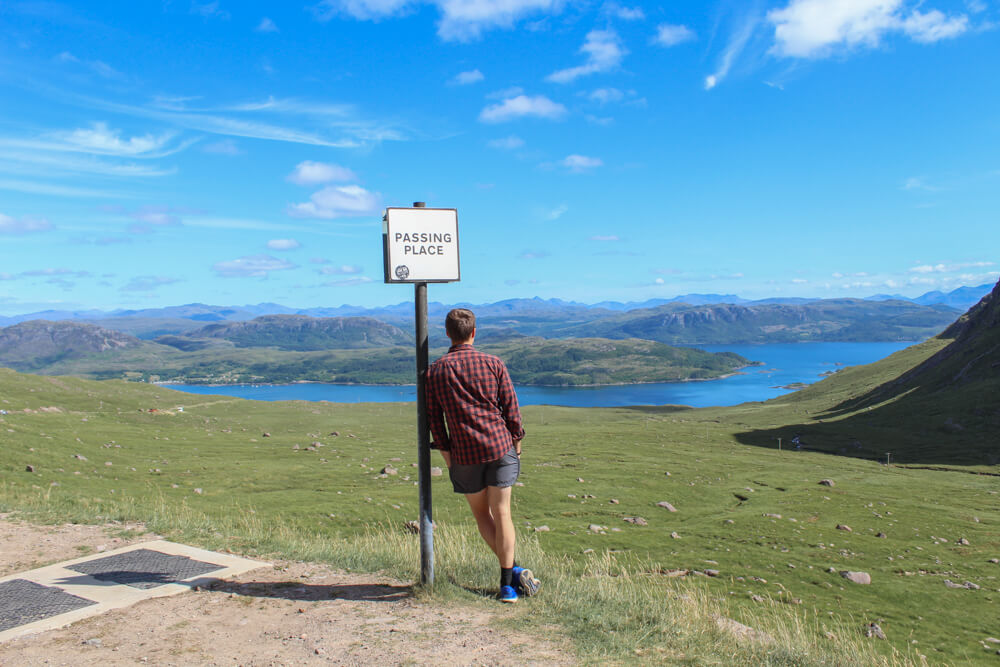
What Should I Pack for the NC500?
When it comes to packing for a trip along the NC500 there is one item of clothing that you are going to need all year round: a waterproof. It rains in Scotland on average 250 days a year, meaning that during your 7-day NC500 road trip you will probably experience at least a drizzle of rain. Due to this, the number one item on any Scotland packing list is a good waterproof jacket.
As for the rest of the year, the temperature in Scotland and the central heartlands is reasonably mild for most of the year. During the winter months, you will most likely experience snow, however, temperatures usually sit around freezing, so it is not too cold. For your reference, the average temperatures in Scotland are listed below during each season.
Spring (March, April, May) – 5-10 degrees C
Summer (June, July, August) – 15 degrees C
Autumn (September, October, November) – 5-10 degrees C
Winter (December, January, February) – 0-5 degrees C
As you can see, the weather never really gets above the teens, with anything over 25 degrees C considered a heatwave. The best way to pack for your trip to the highlands is with layers that can be added and removed as you need them. You will definitely need a hat and gloves during the colder months and will most likely need sunscreen to protect you on the long days in the open.
Given the beautiful sights and scenery that you are no doubt going to see around Scotland, we highly recommend packing a good camera for your trip. If you want to read more about the cameras we use and why we love them, check out the link below.
Photography Equipment
Main Photography Camera – Sony A7v Mirrorless Camera and Sony A7iii Mirrorless Camera
Microphone – Sony Mic ECM-B1M
Main Lens – Tamron 17-28mm f/2.8
Zoom Lens – Tamron 70-180mm f/2.8
Camera Tripod – ZOMEI Z669C Camera Tripod
Gorilla Pod – JOBY JB01507-BWW GorillaPod
Action Camera – GoPro Hero 11 and Insta 360 One RS
Drone Camera – DJI Mavic Pro 3
Camera Bag – Wandrd PRVKE 41L and The Nest by Tropicfeel
Phone Tripod – Manfrotto MKPIXICLAMP-BK, Mini Tripod with Universal Smartphone Clamp
Sturdy Phone Tripod & Selfie Stick – ATUMTEK 61″ Selfie Stick Tripod, Sturdy Phone Tripod Stand with Wireless Remote
Hard Drives – LaCie Rugged Mini, 5TB, 2.5″, Portable External Hard Drive
SSD – SanDisk Extreme Pro 1TB Portable NVMe SSD
Travel Adapter –Worldwide Travel Adapter Universal Travel Plug with 4 USB Ports+Universal AC Socke
Where Should I Stay on the NC500?
The remoteness in the highlands of Scotland will leave you with little choice of accommodation in each location along the NC500, however, there are still enough options to choose from to ensure a comfortable trip. These are mostly in the shape of B&Bs, Airbnbs, converted cottages and other quirky accommodations.
Depending on how adventurous you are, there may be more accommodation choices than just the above, often with an even better view. Caravan and camping sites are abundant along the NC500, drawing camping enthusiasts from all over the world. For some of the most spectacular bedside scenery along the North Coast 500, we recommend packing a tent and getting in touch with nature for the week.
As we travelled along the North Coast 500, camped in our trusty Vango tent on a mixture of campsites and wild sites. Wild camping is a fantastic way to enjoy the beauty of the highlands, however, it must be done respectfully. Read our full guide to Wild Camping if you wish to give it a go so you know everything you need to for a comfortable and sustainable trip.
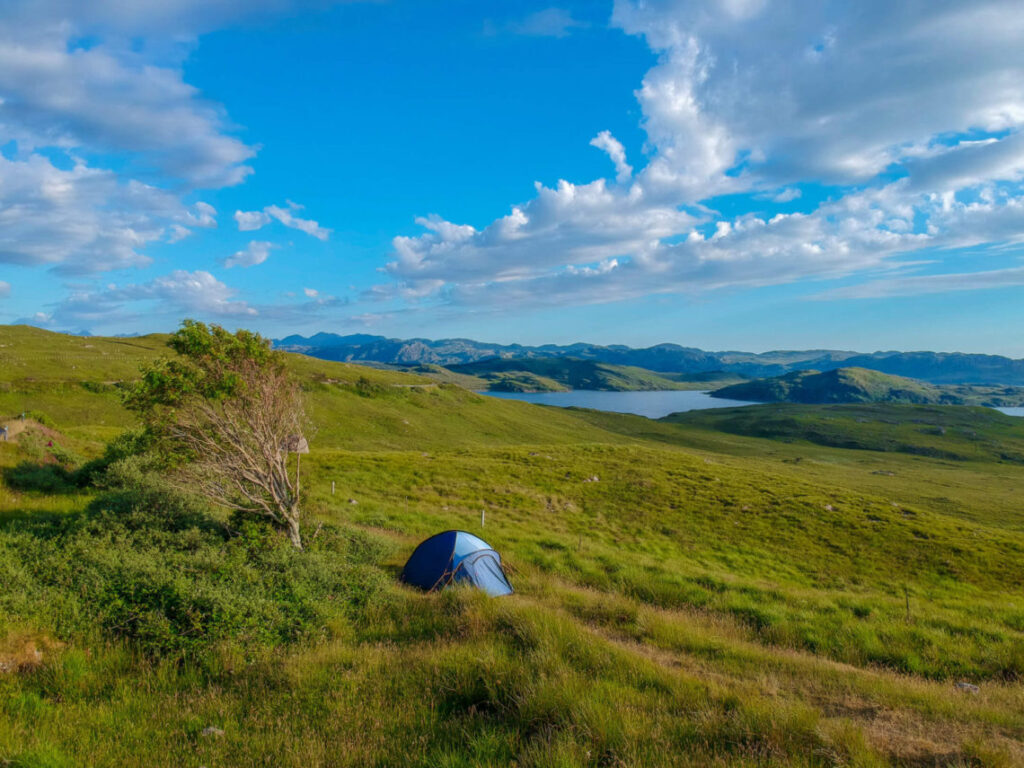
What is the Best Travel Insurance?
No matter what type of adventure you are heading on, whether it is a mountain adventure or a relaxing beach destination, one thing we all need to be aware of is that accidents can happen. The last thing you want is for an unexpected medical emergency to ruin your trip of a lifetime. Luckily, that is what travel insurance is for.
Whenever we travel, we get covered with Safetywing Travel Insurance, a reliable, friendly and extremely affordable method of covering yourself on any adventure. With years of experience working for backpackers around the globe, the service they provide is perfect for whatever type of trip you have planned.
Get covered for your next trip and get a quote from Safetywing right here.
So there you have it, your complete guide to the Bone Caves. If you have been to Scotland recently, let us know how you found it in the comments below. What were your favourite sights? What did you think of the castles? Where was your favourite stop? Let us know in the comments below.
If you are planning a full trip to Scotland, make sure you check out the rest of our guides and Scotland content to ensure a stress-free adventure. We will gladly answer any questions you have with regards to your trip, so either DM us or send us an email.
Don’t forget that sharing is caring! Be sure to share this article with your family and friends to let them know all about your big plans. Maybe even inspire them to visit the NC500 themselves! Catch up with us on social media and see what we are currently up to. Tag us in your photos from your North Coast 500 adventure on Instagram so that we can share them with the rest of our community.
Read Now:
- North Coast 500 Highlights – 19 Best Sights Along the NC500
- Castles of the North Coast 500 – The Best of Scotland’s History
- North Coast 500 Budget – How Much Does the NC500 Cost?
This article may contain affiliate links that provide us with a small income. For more information read our Affiliate page.
Save this image to your Scotland Pinterest Board for later!
